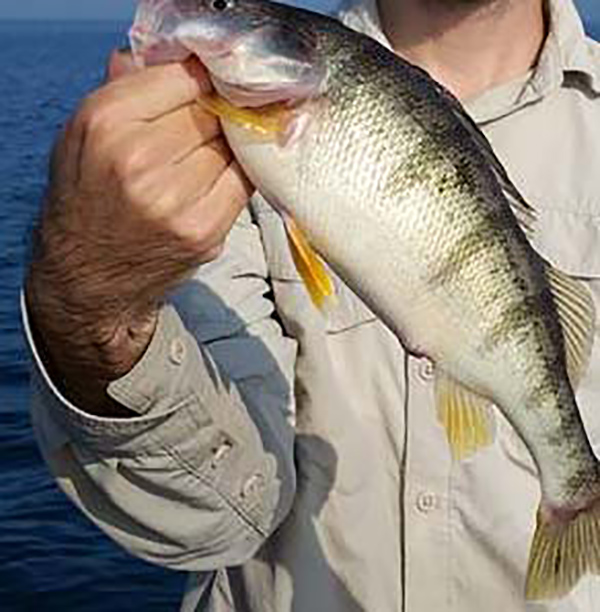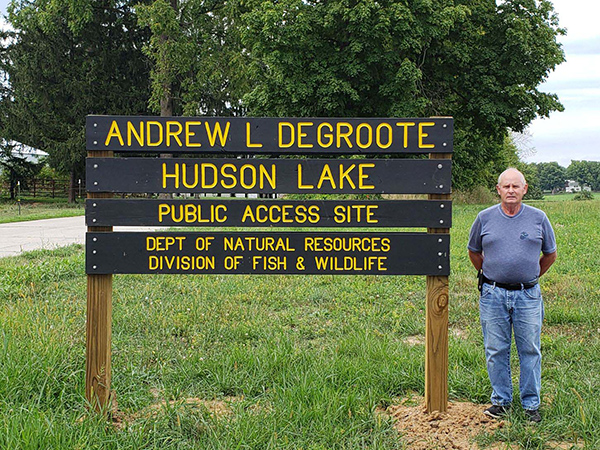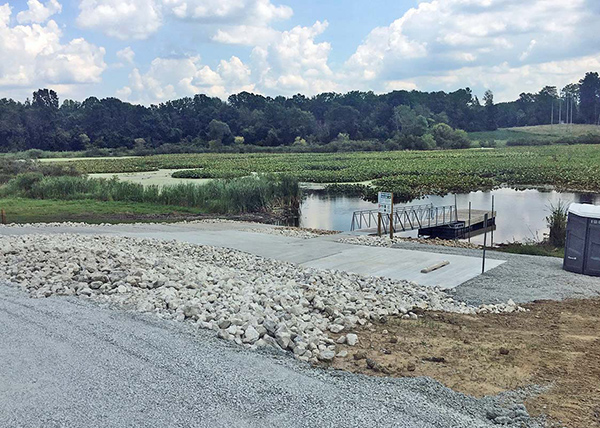- Details
By Louie Stout
 Finally – A Good Year for Lake Michigan Perch
Finally – A Good Year for Lake Michigan Perch
They say bluegill is Indiana’s most popular sportfish, but that’s because they are so prevalent in Hoosier waters.
That’s no knock on bluegills – how can you not like them? They’re pugnacious at the end of the line and scrumptious against the palate.
However, if yellow perch were equally prolific, they’d challenge the bluegill’s glorious reputation, at least on the dinner plate.
Just ask Lake Michigan anglers, who have been enjoying one of the best yellow perch seasons in recent years.
Of course, it’s not like the good ol’ days of decades ago when catching a bucket of the big lake’s giant perch was common place.
But it’s been pretty darn good and may be even better the next few years.
“Some anglers claim it’s the best perch fishing they’ve seen in five years,” said Lake Michigan biologist Ben Dickinson.
There are a couple of reasons for the improvement. First, the lake experienced an incredibly successful perch spawn in 2015. Those fish have grown to 8-inchers this year; certainly not jumbos, but they have been plentiful.
Mixed in with those are older/larger fish that keep anglers happy. That 2015 year class should be 9 inches or bigger next season.
However, abundance doesn’t always determine a successful Lake Michigan fishery.
The weather often rules.
“We finally got a good weather break that allowed the lake to set up properly,” said Dickinson. ”Last year, every time the weather stabilized we got a north wind that messed up the water column. We had good, stable weather this year.”
Water temperature is critical. When inshore water temps drop into the 60s, it pulls the perch shallower where they are accessible to anglers. This year, catches have been good in that 15 to 35 foot depths from Portage, Ind. east to New Buffalo. In fact, early morning anglers who are on the water at first-light have caught them as shallow as 10 feet.
But when the north wind kicks up, it not only makes it difficult for small boaters to get out, but it mixes the water and the perch scatter or move away from the shore.
Dickinson said the 2016 spawn was decent, but not anything like 2015. Data on subsequent years is sketchy because the DNR no longer contracts with Ball State University to do perch studies.
“Anecdotally, though, we’ve gotten a lot of reports from anglers who report seeing little perch chasing their baits when they wind in their lines,” he said. “So they have definitely been reproducing which is a good sign.”
Dickinson said Indiana will be gathering more perch data next year as his crew will resume doing the work that Ball State researchers once did.
“Next year will have a full work up on perch and expand our research,” he noted.
Of course, yellow perch can be caught on inland lakes, too, but are somewhat limited to the clear, sandy bottom lakes. Wawasee and Maxinkuckee in northern Indiana are good examples, while Diamond and Eagle in southwest Michigan also offer fair-to-good perch fishing.
Because the fish like cooler temperatures, the best fishing tends to be in early spring and late fall on shallow flats. Perch spawn not long after the ice leaves our lakes.
- Details
By Louie Stout
Michiana anglers are fed up with the way some area lake associations have amped up their aquatic plant treatments in recent years.
Anglers understand that shallow areas where thick non-native vegetation impedes boat traffic or beach areas need reduced. Yet, some associations have gone so far as nuking offshore flats that have no impact on boating or swimming.
I can assure you several fishery biologists are equally concerned. However, their hands are tied either legislatively, or politically.
The annual dump of herbicides has destroyed a lot of fish habitat in recent years. It doesn’t matter whether you fish for panfish, bass, pike or walleye; excessive treatments have negative effects.
Plants not only provide good habitat for young fish that can grow to become big fish, but they absorb nutrients coming into the lake to help keep it clear.
- Details
By Louie Stout
 Jack DeGroote Gives Back with Hudson Access
Jack DeGroote Gives Back with Hudson Access
Indiana needs more people like Jack DeGroote.
If the state had more folks like this generous man, we’d have a lot more public access on northern Indiana lakes.
You see, the 75-year old Eagle Global Logistics retiree probably could have made some money on the one acre land parcel he gifted to the Indiana DNR for the new Hudson Lake public access.
But he didn’t. He chose to donate the land that recently became the Andrew L. DeGroote public access site.
“God gave us a reason to do it by blessing my family use of the lake over the years and this was our opportunity to give something back,” said the modest Hudson Lake, Ind. man.
In addition, it gave him the opportunity to honor his brother Andrew who died in a hunting accident in 1945, just two years after Jack was born.
Andrew was hunting alone about a mile from home, when, according stories told to Jack, he stuck his gun through a fence and the wire caught the hammer. It discharged into his shoulder.
- Details
By Louie Stout
 New Hudson Lake Access Opens
New Hudson Lake Access Opens
You can now launch your boat at the new public boat launch on Hudson Lake in LaPorte County.
The DNR completed construction of the new access and it is now open for public use. Prior to the construction work that began in July, Hudson was Indiana’s largest natural lake without a DNR public access.


